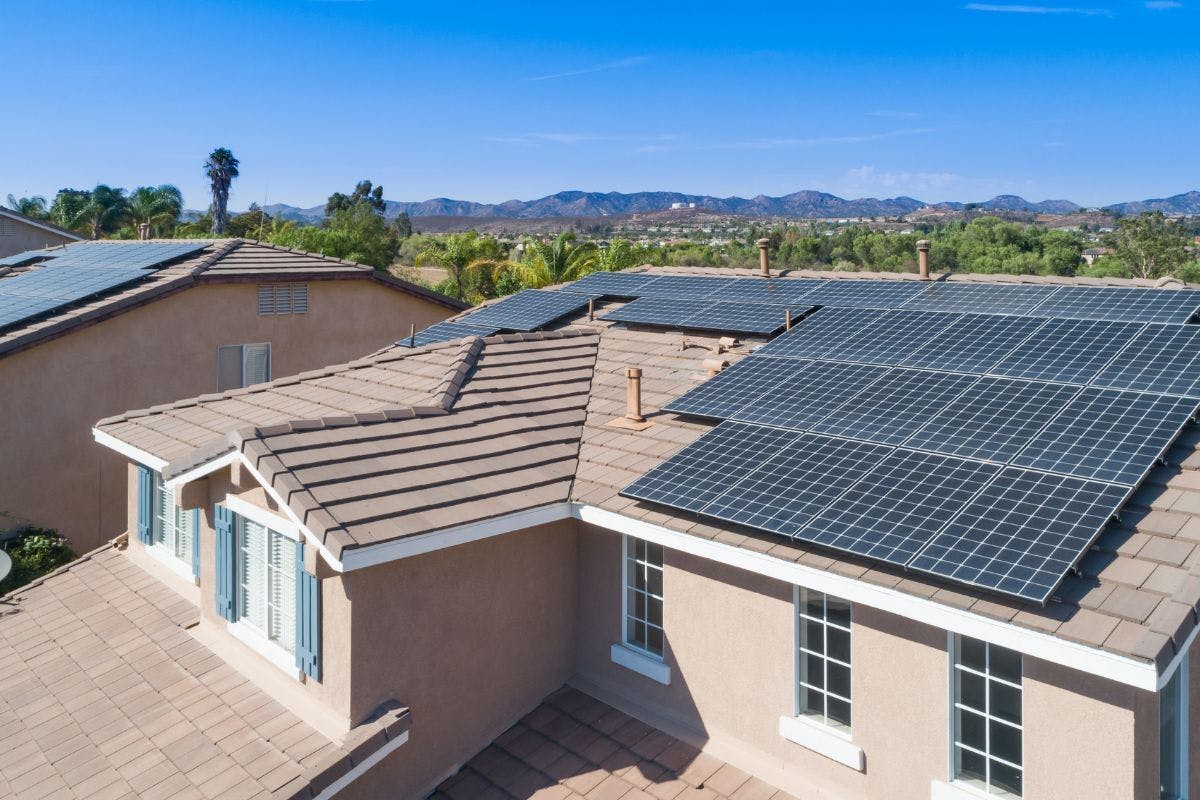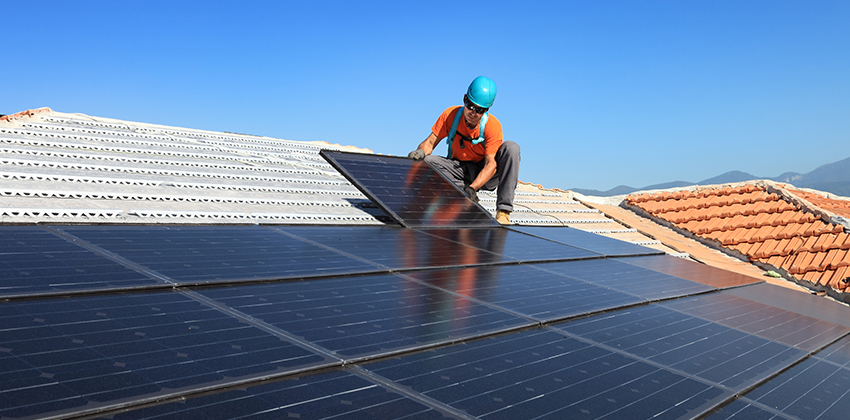Discovering the Various Kinds Of Solar Panels and Their One-of-a-kind Benefits
The landscape of solar panels supplies numerous choices, each with unique benefits fit to different applications. Monocrystalline panels attract attention for their efficiency and appearances, while polycrystalline models attract budget-conscious customers. Thin-film modern technology provides flexibility in installation. Ingenious designs like bifacial and building-integrated photovoltaics even more improve the allure of solar energy. Comprehending these differences is essential for making notified decisions. The question remains: which type will best fulfill specific energy needs?
Monocrystalline Solar Panels
Although various kinds of solar panels are available, monocrystalline solar panels are commonly pertained to as the most efficient option. These panels are made from a single crystal structure, generally silicon, which enables them to transform sunlight into electricity better than other kinds. The performance rates for monocrystalline panels can vary from 15% to over 22%, making them a prominent choice for household and business installations where room is restricted.

Polycrystalline Solar Panels
Polycrystalline solar panels are produced utilizing an unique manufacturing process that entails melting numerous silicon crystals with each other. This technique can result in advantages such as reduced manufacturing prices, making them a prominent option for several customers. Nonetheless, their effectiveness and performance variables might vary contrasted to other sorts of photovoltaic panels, warranting mindful factor to consider.
Manufacturing Process Benefits
The production process of polycrystalline solar panels supplies a number of benefits that add to their appeal in the eco-friendly power sector. The manufacturing uses silicon scrap, which decreases waste and decreases material prices, making it financially practical. Unlike monocrystalline panels, the production of polycrystalline panels involves less complex and much less energy-intensive techniques, causing a smaller carbon impact. Additionally, the spreading process permits for the creation of several cells all at once, improving performance in manufacturing. This technique additionally results in an extra consistent framework, which can boost the overall performance and long life of the panels. As a result, polycrystalline solar panels offer a cost-efficient solution for consumers while advertising lasting manufacturing methods within the sector.
Effectiveness and Efficiency Factors
Just how do performance and performance aspects affect the effectiveness of polycrystalline photovoltaic panels? These panels commonly exhibit lower effectiveness rates, balancing around 15-20%, contrasted to their monocrystalline counterparts. Factors such as temperature level of sensitivity, shielding, and the angle of installation greatly impact their performance. Polycrystalline panels have a tendency to execute far better in cooler climates but might battle in high temperatures, resulting in decreased output. In addition, their efficiency can be influenced by dirt and particles accumulation, necessitating regular upkeep. Despite these difficulties, polycrystalline panels are much more affordable and provide a solid equilibrium between expense and efficiency. Understanding these efficiency and performance factors is important for consumers looking for to maximize solar energy production and overall system effectiveness.
Thin-Film Solar Panels
Thin-film solar panels stand for a functional and light-weight alternative in the solar power landscape. These panels are created by depositing one or more slim layers of solar material onto a substrate, which can consist of plastic, glass, or metal. This production process enables greater versatility in design and applications contrasted to standard crystalline solar panels.
Thin-film innovation usually includes reduced efficiency rates, yet it compensates for this with decreased production expenses and boosted efficiency in low-light conditions. Their light-weight nature makes them appropriate for installation on varied surface areas, consisting of bent structures and lorries. Furthermore, these panels can be incorporated into building materials, offering aesthetic advantages along with power generation.
Bifacial Solar Panels
Bifacial solar panels are acquiring focus for their enhanced efficiency and performance, as they can record sunlight from both sides. This dual-sided layout permits for increased energy production, especially in reflective settings. In addition, their installation provides prospective price benefits, making them an appealing option for different applications.
Performance and Performance
The efficiency and efficiency of solar panels are important consider determining their effectiveness in energy generation, with bifacial solar panels attracting attention for their ingenious design. These panels feature solar batteries on both sides, allowing them to capture sunlight from several angles. This dual-sided ability improves power outcome, specifically in environments with reflective surface areas, such as snow or sand. Bifacial solar panels can enhance power production by 10-20% compared to standard monofacial panels. Their ability to harness indirect sunshine adds to their overall effectiveness, making them an engaging choice for different applications. Additionally, advancements in technology proceed to enhance their efficiency metrics, solidifying their place in the eco-friendly energy landscape as an extremely effective service for solar power generation.
installation and Price Advantages
When thinking about the advantages of bifacial photovoltaic panels, the installation procedure and expense advantages are substantial elements that can influence decision-making for both domestic and business applications. Bifacial panels can be placed on different structures, consisting of roofs and ground setups, permitting for flexible deployment. Their ability to absorb sunshine from both sides boosts energy generation without calling for extra panels. This performance can result in reduced total installation costs, as fewer devices may be required to attain preferred look what i found energy outputs. Furthermore, their longevity frequently converts to lower upkeep expenses with time (Residential Solar Installation). As an outcome, the long-term financial benefits, incorporated with installation versatility, make bifacial solar panels an enticing option for those looking for sustainable power remedies
Building-Integrated Photovoltaics (BIPV)
Building-Integrated Photovoltaics (BIPV) represent a substantial evolution in solar innovation, seamlessly including solar batteries into structure products such as roofing systems, home windows, and frontages. This innovative technique not just generates renewable resource but additionally enhances the appearances and functionality of buildings. BIPV systems can replace standard structure materials, minimizing the total price of building and construction while contributing to power performance.
The assimilation of solar technology into architectural style enables much better area use, as these systems can be set up without calling for added land. Furthermore, BIPV remedies are adjustable, allowing designers to produce distinct designs that complement the building's overall look. The twin capability of BIPV-- serving both as a power generator and a structural component-- offers substantial benefits in metropolitan environments where area is limited. As understanding of lasting building techniques grows, BIPV is becoming an increasingly attractive choice for developers and house owners alike.
Concentrated Photovoltaic (CPV) Equipments
Concentrated Photovoltaic (CPV) systems represent a sophisticated solar innovation that mirrors or uses lenses to concentrate sunshine onto high-efficiency solar cells. This cutting-edge method enables for the collection of substantially even more solar power than conventional solar systems. By focusing sunlight, CPV systems can attain higher efficiencies, typically exceeding 40%, making them especially ideal for locations with high straight sunshine.
Additionally, CPV systems normally call for much less land area contrasted to standard photovoltaic panels, as they create more power from a smaller footprint. These systems commonly include tracking mechanisms that readjust the placement of the lenses or mirrors to follow the sun's movement, maximizing power capture throughout the day. However, CPV technology is ideal suited for particular geographical areas, where direct sunshine is plentiful, limiting its applicability in areas with regular cloud cover. In general, CPV systems present a promising alternative for boosting solar power manufacturing in perfect environments
Contrast of Photovoltaic Panel Effectiveness and Cost
Although numerous photovoltaic panel innovations exist, their efficiency and price can considerably differ, influencing customer options and market characteristics. The most common kinds-- polycrystalline, monocrystalline, and thin-film-- show distinct attributes in efficiency and pricing. Monocrystalline panels have a tendency to offer the greatest efficiency rates, commonly exceeding 20%, however they generally come with a greater cost tag. In comparison, polycrystalline panels are generally much more cost effective, with efficiencies around 15-20%, making them a prominent selection for budget-conscious consumers. Thin-film modern technologies, while less effective at around 10-12%, offer adaptability and reduced installation prices, appealing to certain applications.
Ultimately, picking the appropriate photovoltaic panel entails weighing the equilibrium in between efficiency and expense. Consumers need to consider their energy needs, budget plan restrictions, and long-lasting savings capacity, as these aspects will certainly determine the most effective option for their solar power system.
Frequently Asked Inquiries
Exactly How Long Do Solar Panels Commonly Last Prior To Requiring Replacement?
Solar panels normally last between 25 to three decades prior to requiring replacement. Their resilience depends on numerous factors, including quality, installment, and regional ecological problems, which can affect their efficiency and long life gradually.

Can Solar Panels Work in Cloudy or Rainy Issues?
Solar panels can without a my blog doubt work in over cast or rainy conditions, albeit at reduced performance. They still catch diffuse sunlight, allowing for power generation, though power output may be significantly reduced than on bright days.
What Upkeep Is Needed for Solar Panels?
Routine upkeep for solar panels consists of routine cleaning to remove dirt and debris, inspecting for damages, guaranteeing connections are secure, and evaluating system performance. Routine check-ups can enhance performance and extend the lifespan of the panels.
Exist Any Type Of Ecological Impacts From Production Solar Panels?
Yes, manufacturing solar panels can have ecological effects, including source removal, energy intake, and waste generation. Nonetheless, developments in technology aim to lessen these effects, advertising even more lasting hop over to here methods in production and reusing processes.
How Do I Select the Right Solar Panel for My Home?

Numerous kinds of solar panels are available, monocrystalline solar panels are often related to as the most efficient option. Thin-film solar panels stand for a flexible and lightweight alternative in the solar power landscape. The efficiency and efficiency of solar panels are important factors in establishing their efficiency in power generation, with bifacial solar panels standing out for their innovative style. Building-Integrated Photovoltaics (BIPV)
Building-Integrated Photovoltaics (BIPV) represent a stand for evolution considerable advancement technology, innovation incorporating effortlessly including into building materials structure products roofs, facades, home windows windows. Concentrated Photovoltaic (CPV) systems stand for a sophisticated solar modern technology that utilizes lenses or mirrors to concentrate sunshine onto high-efficiency solar cells.